Section 139 Tax-Free Payments to Employees
March 26th, 2020
On March 13, 2020, President Trump declared a national emergency under the Robert T. Stafford Disaster Relief and Emergency Assistance Act (the “Declaration”) due to extraordinary circumstances resulting from COVID-19. The Declaration allows employers to make tax-free payments or reimbursements to employees as “qualified disaster payments” under Section 139 of the Internal Revenue Code.
Qualified disaster payments must be used to reimburse or pay an employee for “reasonable and necessary personal, family, living or funeral expenses” incurred as a result of COVID-19. Payments to employees are not covered by Section 139 if they compensate employees for expenses that are otherwise compensated for by insurance or that are intended to replace lost income. As a result, payments for sick pay or family medical leave remain fully taxable to the employee. Although Section 139 has yet to be utilized for a national pandemic before, a reasonable interpretation of Section 139 would allow for the following to be considered qualified disaster payments as long as they relate to COVID-19.
Employee medical expenses not covered by insurance (i.e. employee deductibles and over-the-counter medications).
Funeral costs of an employee or a member of an employee’s family.
Costs associated with enabling an employee to work from home such as the cost of a computer, cell phone, printer, and supplies.
Child care for family members that are not permitted to attend school during the pandemic.
Qualified disaster payments are federally tax-free to employees and are fully deductible to the employer. There is no federal reporting or disclosures, so such payments are not reported on Form W-2 or 1099 and are not subject to federal income or payroll tax withholding. Generally, state treatment mirrors the federal treatment of qualified disaster relief payments as well.
The IRS is generally pretty lax on the requirements behind qualified disaster payments. There is no limit on the amount or frequency of qualified disaster payments that an employer can make and employees are not required to substantiate their expenses to prove that they are eligible. Furthermore, employers are not required to maintain any formal plan or documentation although we recommend employers do document the following:
The amounts paid and to whom.
The start and end dates of any Section 139 “program.”
A general listing of expenses that will be paid or reimbursed on behalf of employees.
Any maximum amount per employee or in the aggregate that the employer will pay.
Although Section 139 does not provide any additional tax relief to employers aside from allowing a deduction for amounts paid, it does allow them to assist employees in their time of need with tax-free payments. If you’re interested in learning more about making qualified disaster payments to your employees, please contact your Siegfried Advisory relationship coordinator.
- Your Siegfried Advisory Team
The above message is for informational purposes. Please consult your Siegfried Advisory contact or other advisor for further guidance in advance of undertaking transactions or making decisions with tax implications.


